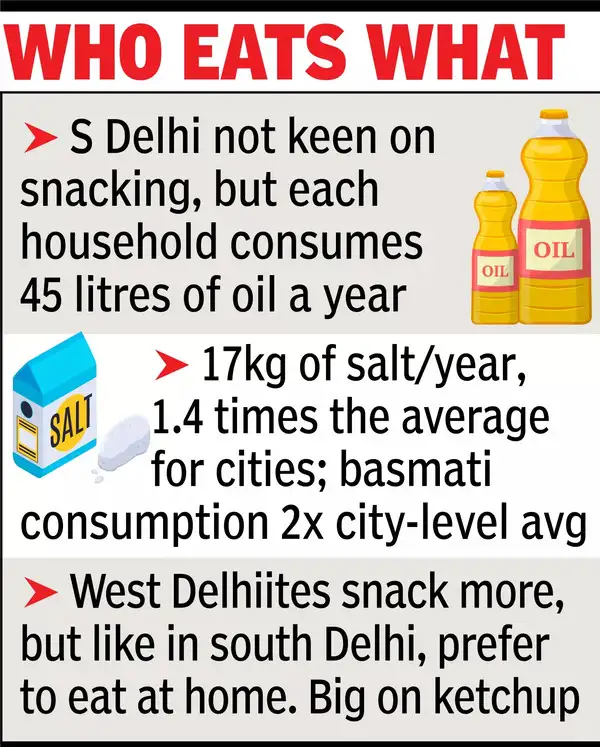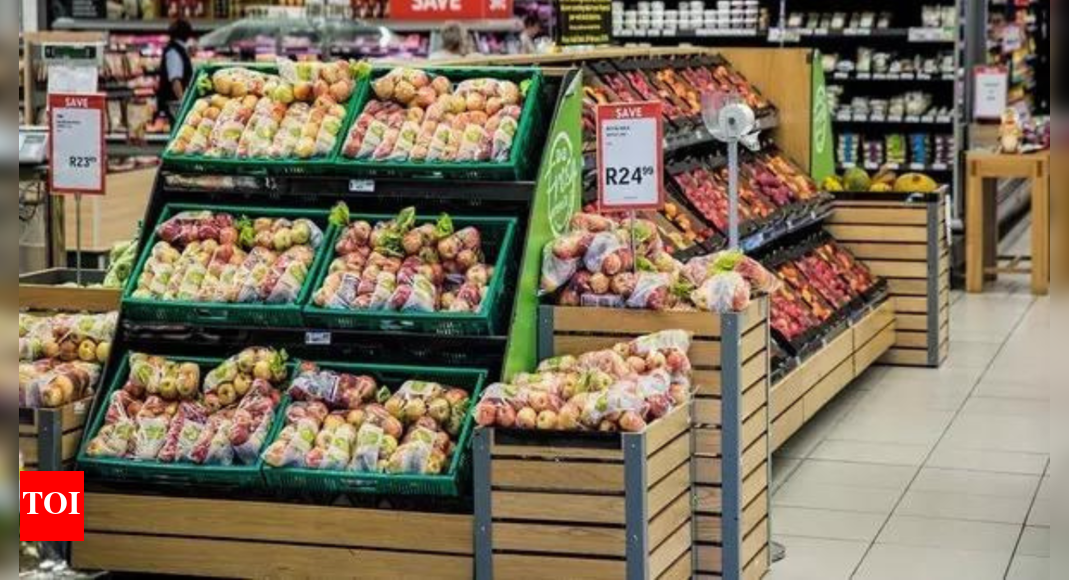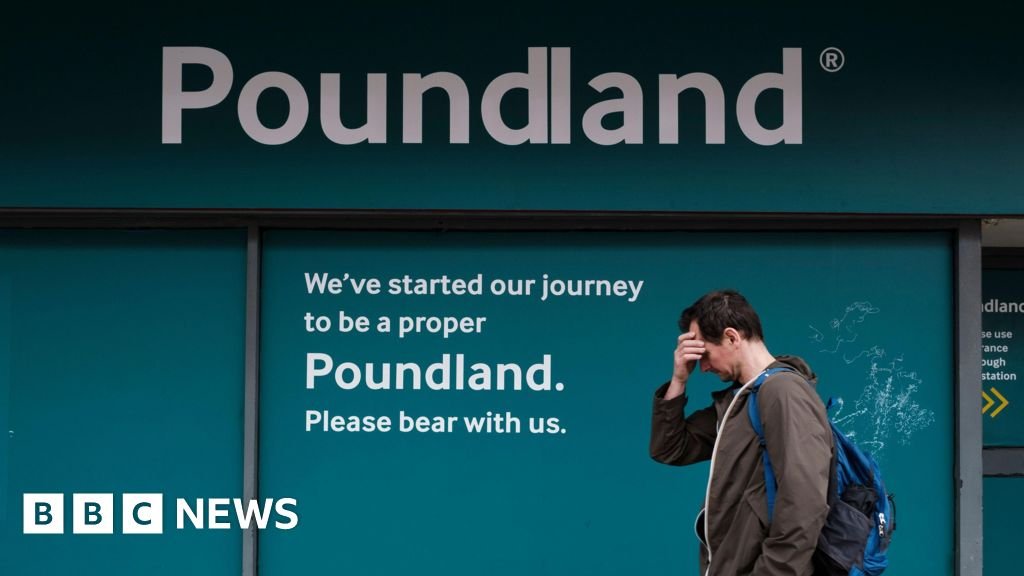NEW DELHI: When it comes to quantity (volume), South Delhi, associated with affluence, is India’s unrivalled consumption capital for fast-moving consumer goods. But West Delhi is the top spender on these goods, not only in the capital, but also in the country. What’s common: both prefer good old home-cooked meals, and bottled cold drinks.A household in the West Delhi cluster – Tilak Nagar, Janakpuri, Sagarpur, and Vikaspuri – spends Rs 39,325 a year on average, which is more than twice the national average, show figures compiled by data and consulting firm Kantar’s FMCG Pulse.On the other hand, a household in South Delhi – Okhla, Kalkaji, Lajpat Nagar, and Bhogal – consumes 240kg of FMCG annually, again, two times the average national consumption.

Bengaluru tops in premium products When it comes to premium products, it is Bengaluru which comes out on top with an average city-level spend of Rs 211 for every kilo of FMCG, surpassing all other cities, none of which exceed Rs 195 per kg.The report also said that Mumbai’s Greater Dharavi Santacruz Cluster (GDSC) cluster – comprising Dharavi, Bandra East, Khar East, Santacruz East, Dawri Nagar, and Prabhat Colony – is home to the hyper-frequent shopper with each household making 233 visits to shop for FMCG products, which means once every 37 hours. In contrast, an average urban household in the country makes 128 visits a year to buy items other than atta. An average Mumbai household makes 135 visits.Each visit in the GDSC corridor involves a spend of only Rs 93 and a purchase of just 541g, the lowest among metro clusters. Only two other metro clusters, Surat and Kolkata, average less than Rs 100 per visit. The lower average spend may be linked to the small size of dwelling units.The insights, which study the consumption pattern of metros, breaking them down into 157 micro-clusters, have excluded a regionally skewed category of atta.Among Delhi clusters, the South Delhi cluster purchases the least quantity of snacking products, but consumes 45 litres of edible oil annually, slightly above the city average, and 17kg of salt per annum, approximately 1.4x the city-level average.Additionally, this cluster is a heavy consumer of basmati rice, twice the city-level average. Its low interest in snacking, paired with high consumption of staples, suggests a preference for home-cooked meals. However, its consumption of 20 litres of bottled soft drinks annually, 1.3 times the city average, suggests that it may be driven more by taste than health concerns, according to Kantar.In contrast, the West Delhi cluster is a major market for salty snacks, with households spending approximately Rs 1,700 annually on these products, 1.3 times the city average. Further, significant spending on spices and basmati rice suggests that, like the South Delhi cluster, West Delhi households prefer home-cooked meals. Additionally, a two-fold expenditure on sauces and ketchups, and a 1.9-times spend compared to the city average on bottled soft drinks, highlight the cluster’s focus on flavoured and food-centric lifestyles.“Delhi has always stood out for its preference for larger pack sizes across FMCG categories, a clear reflection of the city’s higher consumer affluence and evolved buying behaviour,” said Dabur India’s head of sales, Rehan Hasan.
var _mfq = window._mfq || [];
_mfq.push([“setVariable”, “toi_titan”, window.location.href]);
!(function(f, b, e, v, n, t, s) {
function loadFBEvents(isFBCampaignActive) {
if (!isFBCampaignActive) {
return;
}
(function(f, b, e, v, n, t, s) {
if (f.fbq) return;
n = f.fbq = function() {
n.callMethod ? n.callMethod(…arguments) : n.queue.push(arguments);
};
if (!f._fbq) f._fbq = n;
n.push = n;
n.loaded = !0;
n.version = ‘2.0’;
n.queue = [];
t = b.createElement(e);
t.async = !0;
t.defer = !0;
t.src = v;
s = b.getElementsByTagName(e)[0];
s.parentNode.insertBefore(t, s);
})(f, b, e, ‘https://connect.facebook.net/en_US/fbevents.js’, n, t, s);
fbq(‘init’, ‘593671331875494’);
fbq(‘track’, ‘PageView’);
};
function loadGtagEvents(isGoogleCampaignActive) {
if (!isGoogleCampaignActive) {
return;
}
var id = document.getElementById(‘toi-plus-google-campaign’);
if (id) {
return;
}
(function(f, b, e, v, n, t, s) {
t = b.createElement(e);
t.async = !0;
t.defer = !0;
t.src = v;
t.id = ‘toi-plus-google-campaign’;
s = b.getElementsByTagName(e)[0];
s.parentNode.insertBefore(t, s);
})(f, b, e, ‘https://www.googletagmanager.com/gtag/js?id=AW-877820074’, n, t, s);
};
function loadSurvicateJs(allowedSurvicateSections = []){
const section = window.location.pathname.split(‘/’)[1]
const isHomePageAllowed = window.location.pathname === ‘/’ && allowedSurvicateSections.includes(‘homepage’)
const ifAllowedOnAllPages = allowedSurvicateSections && allowedSurvicateSections.includes(‘all’);
if(allowedSurvicateSections.includes(section) || isHomePageAllowed || ifAllowedOnAllPages){
(function(w) {
function setAttributes() {
var prime_user_status = window.isPrime ? ‘paid’ : ‘free’ ;
var geoLocation = window?.geoinfo?.CountryCode ? window?.geoinfo?.CountryCode : ‘IN’ ;
w._sva.setVisitorTraits({
toi_user_subscription_status : prime_user_status,
toi_user_geolocation : geoLocation
});
}
if (w._sva && w._sva.setVisitorTraits) {
setAttributes();
} else {
w.addEventListener(“SurvicateReady”, setAttributes);
}
var s = document.createElement(‘script’);
s.src=”https://survey.survicate.com/workspaces/0be6ae9845d14a7c8ff08a7a00bd9b21/web_surveys.js”;
s.async = true;
var e = document.getElementsByTagName(‘script’)[0];
e.parentNode.insertBefore(s, e);
})(window);
}
}
window.TimesApps = window.TimesApps || {};
var TimesApps = window.TimesApps;
TimesApps.toiPlusEvents = function(config) {
var isConfigAvailable = “toiplus_site_settings” in f && “isFBCampaignActive” in f.toiplus_site_settings && “isGoogleCampaignActive” in f.toiplus_site_settings;
var isPrimeUser = window.isPrime;
var isPrimeUserLayout = window.isPrimeUserLayout;
if (isConfigAvailable && !isPrimeUser) {
loadGtagEvents(f.toiplus_site_settings.isGoogleCampaignActive);
loadFBEvents(f.toiplus_site_settings.isFBCampaignActive);
loadSurvicateJs(f.toiplus_site_settings.allowedSurvicateSections);
} else {
var JarvisUrl=”https://jarvis.indiatimes.com/v1/feeds/toi_plus/site_settings/643526e21443833f0c454615?db_env=published”;
window.getFromClient(JarvisUrl, function(config){
if (config) {
const allowedSectionSuricate = (isPrimeUserLayout) ? config?.allowedSurvicatePrimeSections : config?.allowedSurvicateSections
loadGtagEvents(config?.isGoogleCampaignActive);
loadFBEvents(config?.isFBCampaignActive);
loadSurvicateJs(allowedSectionSuricate);
}
})
}
};
})(
window,
document,
‘script’,
);
#South #Delhi #Indias #capital #FMCG #consumption



